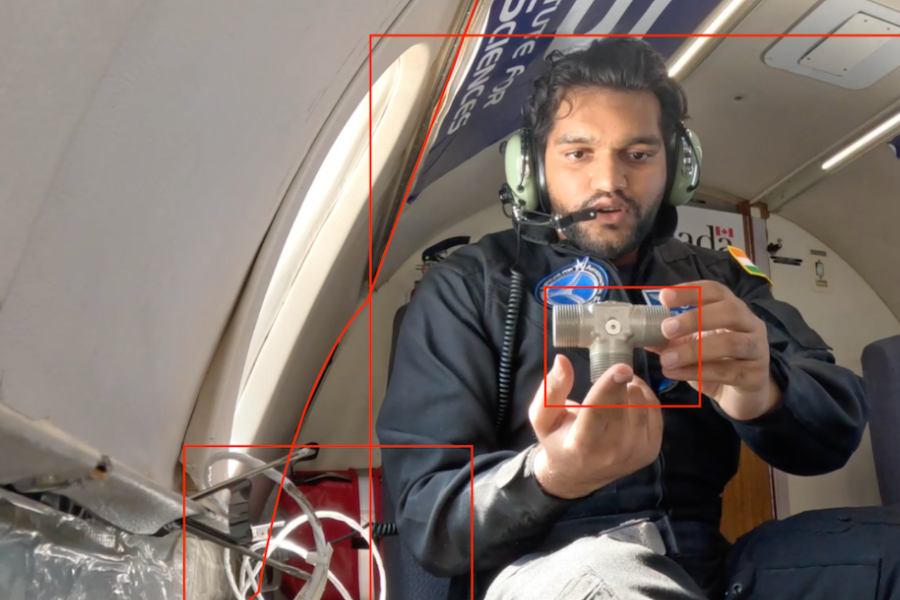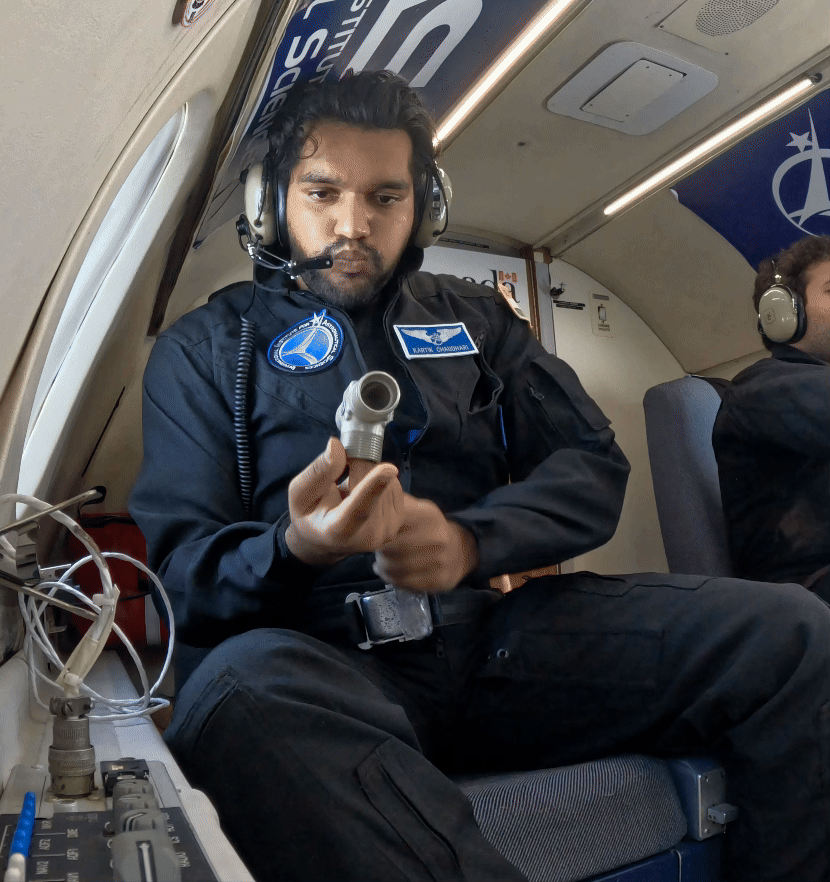
INI Alum Kartik Chaudhari is Making Zero Gravity Safer for Space Travel
By Evan Lybrand
Media InquiriesThe screen came on and Information Networking Institute (INI) alum Kartik Chaudhari greeted us with a warm smile. He was at the National Research Council of Canada (NRCC) in Ottawa, Canada, preparing for a two-week-long expedition to the Arctic Circle.
“It’s more of a pleasure expedition,” said Chaudhari. “But it’s always encouraged for us to do things like this, where you force your body to acclimatize to very different environments.” For the past two years, Chaudhari has been training for a space mission with a group of organizations including the NRCC. It has been a long and challenging process, but Chaudhari took some time to share his journey.
Space has always interested this 2021 graduate of the INI’s Master of Science Information Technology – Mobility (MSIT- MOB), now the Masters of Science in Mobile and IoT Engineering (MSMITE) program. “We know so little about [space], which drove my curiosity in that direction: to build something without this very nice and comfortable environment we have around us,” said Chaudhari. “That is the representation of peak engineering, in my opinion: pushing boundaries on the engineering front. That’s number one.”
How teh INI Led to a NASA Project
Chaudhari grew up in Bahrain and spent much of his youth there until his to return to India, where his family was originally from. There Chaudhari pursued an undergraduate degree in computer science. After receiving advice from one of his seniors, an INI alum, he sought out and was accepted to the INI. Chaudhari was first enticed by the work of former INI associate research professor Pei Zhang but soon branched out to follow his own interests.
As an MSIT- MOB student, Chaudhari took part in an INI Practicum project. Students who participate in Practicum have the opportunity to solve real-world problems while working with professionals in the industry, government and nonprofit sectors. Uniquely, Chaudhari took the initiative and shaped his Practicum experience to follow his passion for space. “I had cold emailed a bunch of NASA scientists,” laughed Chaudhari. “And that’s how we got the project.” For his project, Chaudhari worked to develop Artificial Intelligence (AI) techniques to improve decision-supporting tools for aircraft operations.
When he graduated, Chaudhari felt confident he knew where he was headed. He had entered the INI focused on connected vehicles and it was the combination of this research and the interdisciplinary coursework of the INI that gave Chaudhari insight into the interaction of hardware and software he would use in the future.
"There’s a Lot of Preparation Involved”
Chaudhari then moved to Boston, Massachusetts, where he began to work and study. Currently he is a Machine Learning (ML) Engineer with the AI data management company Prescient Devices, but his interest in space engineering has continued. Upon the recommendation and encouragement from his mentor, he submitted application to become an astronaut with the NRCC. “You need to be physically and mentally fit to pull it off,” he said. “That is definitely what pushed me.”
And with that, Chaudhari began the arduous training process.
“There is a lot of preparation involved,” he said. “Just on the physical front, you should be able to scuba down to a particular level, your vision has to be at a certain level and your lung capacity has to be good. It’s a pretty long journey in itself.”
Beyond the physical work that has gone into Chaudhari’s preparation, he has also been developing potential experiments to work on if he is selected for the mission. He has been working on a collision prevention system to help keep astronauts and equipment safe in zero-gravity environments that has been successfully tested in zero-gravity conditions in the upper atmosphere. If his experiment is selected to be included on the next space flight, Chaudhari will join it as a payload specialist, or subject matter expert, and conduct his research in space.

In zero gravity, even the slightest touch can send an object or a person flying, which can be a major hazard. Chaudhari has been iterating on his new system to help predict and prevent any wayward objects, including people, from causing chaos aboard the shuttle. These experiments are conducted through regular test flights on special planes designed to simulate weightlessness, with each flight broken down into time spent in zero gravity and time spent in regular flight. “It's planned down to 20-second breakdowns in our exercises. So, if you miss one 20-second cycle, you have only a limited number of buffers available,” explained Chaudhari. “We practiced it so many times on the ground that it just became implicit memory at some point.”
Although nothing is guaranteed, Chaudhari continues to train and prepare, embracing the physical and mental challenges. He points to his experience at the INI as a major paradigm shift in how he handles the rigors of training.
“Rigor and resilience,” he said. “[The INI prepared me] to be able to get through, especially when you're trying to do a million things at the same time. My time at the INI also gave me the engineering skills and the confidence to know what is important and what is not when working on a time-sensitive product.”
Before Chaudhari returned to preparing for his expedition, he shared some words of wisdom for students who are preparing to enter the workforce. “You have all the machinery that is required,” said Chaudhari. “Just take advantage of it. Find what you like and create opportunities for yourself.”
